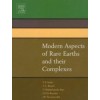- Obecnie brak na stanie



PmodAMP1 to moduł ze wzmacniaczem dla mikrofonu lub słuchawek audio. Digilent 210-131
Brak towaru
Listwa stykowa prosta w kolorze czarnym, dwurzędowa, żeńska, 2x14, raster 2.54mm, THT, RoHS. PBD28S
Brak towaru
Zestaw do budowy obwodów i ich testowania przy użyciu Analog Discovery 2 i LabVIEW. Digilent 471-018
Brak towaru
Brak towaru
Brak towaru
Brak towaru
UGears Linia Tramwajowa to nie tylko model, ale prawdziwa przygoda w świecie mechaniki i inżynierii. Z jego pomocą możesz zanurzyć się w niesamowicie realistyczny i detaliczny świat miejskiego transportu. Idealny zarówno dla początkujących, jak i zaawansowanych miłośników modelarstwa. UGears 70028
Brak towaru
Brak towaru
Zestaw uruchomieniowy z mikrokontrolerem PIC12F675
Brak towaru
Brak towaru
Minikomputer z mikrokontrolerem STM32F107VCT6, gniazdem kart SD oraz interfejsem USB
Brak towaru
Brak towaru
Brak towaru
MOD-13.Z to moduł pozwalający na bezpieczne i wygodne dołączenie karty microSD do projektu z interfejsem SPI. Posiada wbudowany bufor 74HC125. MOD-13
Brak towaru
Brak towaru
Brak towaru

